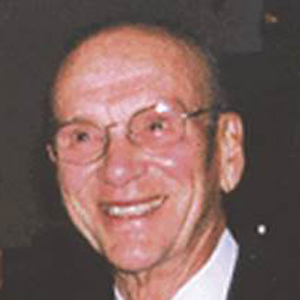
1991-92 ASMBS President
Most Important Event
Focusing the attention of the society on the medical malpractice crisis, and implementing a process to encourage established companies to provide coverage to bariatric surgeons.
I received notification of this project at my home in Edina, Minnesota. I am happy to report that at age 95 going on 96, I still have most of my faculties and remember much of the early days of obesity surgery. I was in medical school during World War II and had an accelerated course. When I finished my studies, I was “taken up” in the military, and on June 6th 1944 landed as a part of the D-Day invasion of Normandy. Subsequently, my unit was transferred to the Pacific theater and I also landed with the troops at Iwo Jima. When I returned, I began studies in internal medicine, but soon realized that surgery was my calling. In residency at the University of Minnesota, I did not know Ed Mason, but now consider him a friend. It was our paper in 1954 that recorded the first bariatric procedure in the United States, performed the previous year. We had good results from the bowl bypass procedures, but complications were substantial. I was in private practice in Minnesota when Dr. Mason called me to come to meet as a part of his early meetings in Iowa City. I decided to switch from intestinal shutting procedures to the gastric bypass procedure as a result of the information that I learned at these early colloquium meetings. Some would say that when an ardent believer in jejunoileal bypasses changed to the gastric bypass procedure, it was ample proof that the better procedure was the gastric restrictive variant. The American Society for Bariatric Surgery was created in June of 1983 and I was in the audience. By definition I became a founding member.
Morbidly obese patients were seriously disadvantaged in our society; prejudice against these individuals was rampant. Not only were they afflicted by the diseases associated with morbid obesity, but they also were ostracized by society. My heart went out to them. As we began to understand the results of our procedures better, I became more and more an advocate for surgical intervention. Not only did the patients experience weight loss, but their comorbid conditions improved remarkably. They were better and lived a happier, more protective life. The ASBS (now the ASMBS) was one of the instruments that facilitated our appreciation that morbid obesity was a disease, and that surgical intervention had a remarkable therapeutic effect.
Sincerely,
John H. Linner